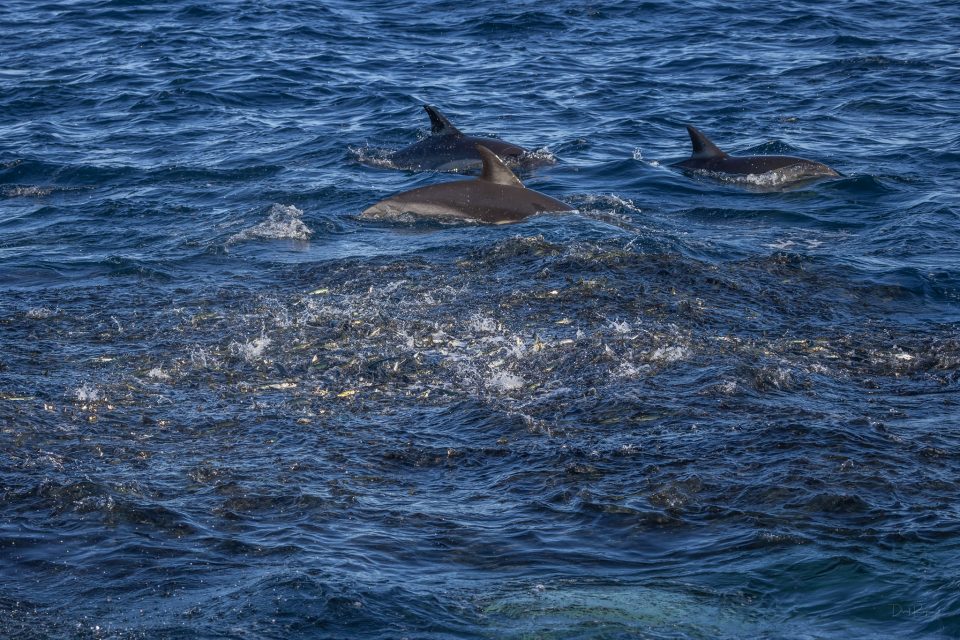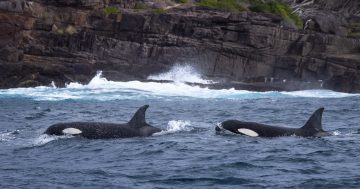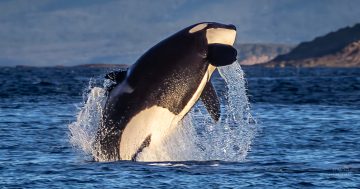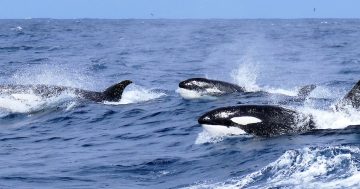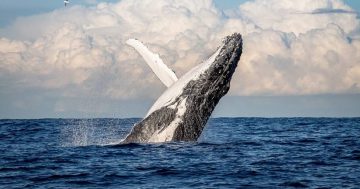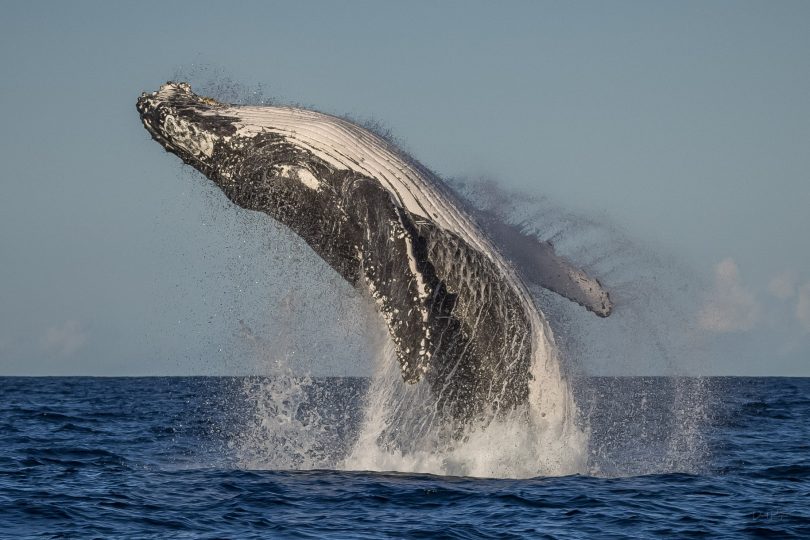
Whale watching season typically peaks in September and October, but this year the whales are playing on their own. Photo: David Rogers Photography.
A pod of up to 100 whales has recently been spotted off the NSW Sapphire Coast. Dubbed a ‘super pod’, it is only the second time such a large congregation has been sighted in Australian waters, with the previous sighting being in the same waters in 2020.
Stunning images of the pod were captured by marine scientists with tour operators Sapphire Coastal Adventures, based in Merimbula and Bermagui.
Simon Millar from Sapphire Coastal Adventures says the pod was first sighted off the coast about a week ago, and he expects the group to move further south in the coming days.
“The whales were feeding on baitfish, working together to herd the bait into a tightknit ball,” he says.
“We were very lucky we could get out there and see the mega pod feeding. It was awesome – the sight, the sound and the smell – you can hear the ocean as they move about and there is a particular fishy smell that hangs in the air as they blow out.”
The pod consists of a majority of humpback whales, with some minke whales in the group.
Simon says despite the massive size of the pod, the boat and crew were not in any danger.
“Humpbacks are the gentle giants of the sea,” he says. “They know where the boat is and they moved slowly and gently around us.”
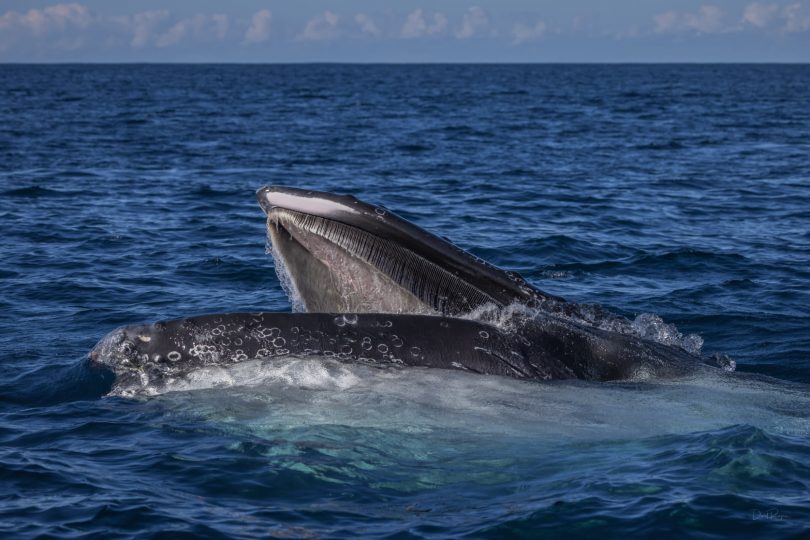
A humpback whale with its mouth open feeding on krill off the NSW Sapphire Coast. Photo: David Rogers Photography.
Photographer David Rogers describes it as “a very David Attenborough moment”.
“It does seem ironic that during a time when we should be welcoming, respecting and admiring these magnificent wild and free animals that we go into lockdown,” he says.
Whale watching season typically peaks in September and October as the whales travel slowly down Australia’s east coast with their calves on their way back to Antarctica for the summer. During the northern migration in autumn, the whales, without calves, usually travel faster and further away from the shoreline.
The timing of the mega pod visit during lockdown is a particularly cruel blow to the many whale watching tour operators on the NSW South Coast who rely on visitors from Sydney, the ACT and Victoria during the relatively short season.
Under lockdown rules, tours are not permitted. Simon says the film crew and scientists onboard the boat had a special exemption.
Lana Wills, who operates Cat Balou Cruises out of Eden, says with no passengers to take out, tour operators are relying on grants and JobSaver to literally stay afloat.
“Our last tours usually head out early November as the last of the whales head south, but we are closed for bookings for now,” she says.
“Most of our customers have been really lovely and have been happy to take vouchers, but we have given refunds as people require them. We do operate sightseeing cruises out on Two Fold Bay and coastal cruises south to Green Cape during the rest of the year, but this is usually our peak season.
“It has been hard even for us to go out and see the whales ourselves as under lockdown rules recreational boating is only permitted three nautical miles off the LGA [local government area].”
Lana is urging all recreational boaters to abide by the rules that apply for whale watching and the approach zones. If you are on a powered or non-powered water vessel such as a boat, surfboard, surf ski or kayak, you need to maintain a distance of at least 100 metres from the whale(s), and 300 metres if a calf is present.



